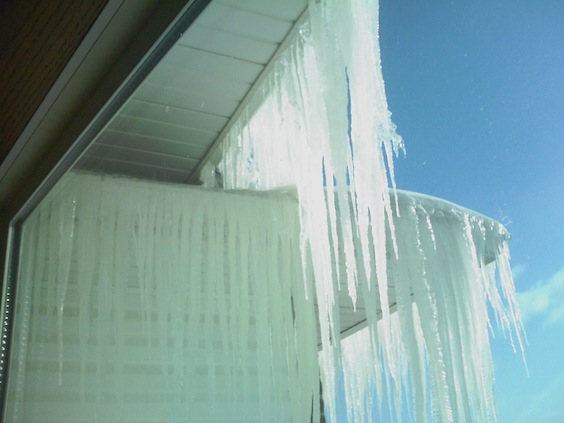18 Feb Ice: And What It Means for Your Roof and Gutters
Posted at 06:55h
in News

If you’re in the Greenville, Spartanburg area, it’s not surprise to you that we’ve seen a lot of ice this week. And when ice comes down things can happen that we’d probably rather not happen. Things like power outages, trees down, ice dams of our roofs that can cause leaks, gutter damage from the weight of the ice, and many more problems we don’t like to experience as homeowners. As roof specialists, we are concerned and ready to assist you in handling the needs to correct conditions before they become a major challenge.
Roof and Ice = Trouble
We have many years in the gutter installation business and believe that a seamless gutter system is the best option for optimal protection on your home. Note: we said seamless gutters. A pieced gutter system where the installers tie one section of your gutters into another creates a seam which are prone to leak. In most cases, leaky gutters will cause your soffit and fascia to get damp and oner time, it will begin to rot which will become an additional cost to you. Also, a seam in a run of gutter can affect the way the gutters are leveled which may cause inadequate drainage.
2 Things To Watch for During Ice Storms:
1. Ice dams – The most common cold weather problem you’re likely to see on your roof are ice dams. Ice dams typically form when the upper part of the roof is warm enough to melt snow and the eaves are cold enough to cause the runoff to freeze into icicles. The warmth on your roof comes from the air from inside the house seeping into the attic and heating it up. The water from the melting snow runs to the eaves where the roof is not heated and begins to re-freeze the pool of water on the eave of your roof and create what is commonly known as an ice dam. it.The problem is, there is seldom a quick fix for ice dams. You can try calcium chloride or rock salt to melt the ice. If you use a mechanical means to remove it (chisels, picks, etc.), you’re probably going to damage the roof.
2. Water damage – With the build up of both ice dams and condensation, it is possible and depending on how much of each you experience on your roof, it may even be likely that you will find some water damage on your roof or it may cause roof leaks to occur in your home.
A common question that comes from homeowners when these issues come up in the winter is whether or not a roof can be replaced in such cold weather. You can roof in cold weather so long as it’s dry and above 40 degrees. Most manufacturers state specific requirements about what temperatures their materials can be installed in. For the most part, all manufacturers recommend a roofing temperature of at least 40 degrees or more. It is possible to install roofs in temperatures less than 40 but extra precautions are needed.
If you need help assessing your roof this winter — please contact us here for your free roof evaluation.
[si-contact-form form=’1′]
REEVES CONSTRUCTION, INC.
GENERAL CONTRACTOR
REEVES ROOF & GUTTERS
Serving Georgia, the Carolinas and Eastern Tennessee
Toll Free: 866-592-3632
Serving to meet the needs of these great cities:
Greenville – Spartanburg
South Carolina: Greenville, Spartanburg, Union, Easley, Greer, Murrells Inlet, Charleston, Myrtle Beach
North Carolina: Charlotte, Waxhaw, Greenville, Rockville
Georgia: Atlanta Metro Area, Stockbridge, College Park, Columbus, Jonesboro, Macon
Eastern Tennessee: Nashville, Knoxville


